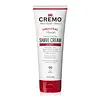What's inside
What's inside
 Key Ingredients
Key Ingredients

 Benefits
Benefits

 Concerns
Concerns

 Ingredients Side-by-side
Ingredients Side-by-side

Water
Skin ConditioningStearic Acid
CleansingCocos Nucifera Oil
MaskingPotassium Hydroxide
BufferingGlycerin
HumectantParfum
MaskingLactic Acid
BufferingSodium Hydroxide
BufferingAvena Sativa Kernel Extract
AbrasiveCamellia Sinensis Leaf Extract
AntimicrobialMagnesium Aluminum Silicate
AbsorbentSodium Metasilicate
BufferingPentaerythrityl Tetra-Di-T-Butyl Hydroxyhydrocinnamate
AntioxidantTetrasodium Glutamate Diacetate
Hexyl Cinnamal
PerfumingCitronellol
PerfumingGeraniol
PerfumingCitral
PerfumingLimonene
PerfumingLinalool
PerfumingWater, Stearic Acid, Cocos Nucifera Oil, Potassium Hydroxide, Glycerin, Parfum, Lactic Acid, Sodium Hydroxide, Avena Sativa Kernel Extract, Camellia Sinensis Leaf Extract, Magnesium Aluminum Silicate, Sodium Metasilicate, Pentaerythrityl Tetra-Di-T-Butyl Hydroxyhydrocinnamate, Tetrasodium Glutamate Diacetate, Hexyl Cinnamal, Citronellol, Geraniol, Citral, Limonene, Linalool
Water
Skin ConditioningSodium Cocoyl Isethionate
CleansingStearic Acid
CleansingCetearyl Alcohol
EmollientGlycol Distearate
EmollientParfum
MaskingMacadamia Ternifolia Seed Oil
EmollientPolyether-1
Hydroxypropyl Guar Hydroxypropyltrimonium Chloride
Allantoin
Skin ConditioningAloe Barbadensis Leaf Juice
Skin ConditioningCalendula Officinalis Flower Extract
MaskingXylitol
HumectantCitrus Limon Fruit Extract
MaskingCarica Papaya Fruit Extract
Skin ConditioningOlea Europaea Leaf Extract
PerfumingBHT
AntioxidantPerfluorodecalin
Skin ConditioningPhenoxyethanol
PreservativeEthylhexylglycerin
Skin ConditioningTitanium Dioxide
Cosmetic ColorantCitric Acid
BufferingWater, Sodium Cocoyl Isethionate, Stearic Acid, Cetearyl Alcohol, Glycol Distearate, Parfum, Macadamia Ternifolia Seed Oil, Polyether-1, Hydroxypropyl Guar Hydroxypropyltrimonium Chloride, Allantoin, Aloe Barbadensis Leaf Juice, Calendula Officinalis Flower Extract, Xylitol, Citrus Limon Fruit Extract, Carica Papaya Fruit Extract, Olea Europaea Leaf Extract, BHT, Perfluorodecalin, Phenoxyethanol, Ethylhexylglycerin, Titanium Dioxide, Citric Acid
Ingredients Explained
These ingredients are found in both products.
Ingredients higher up in an ingredient list are typically present in a larger amount.
Parfum is a catch-all term for an ingredient or more that is used to give a scent to products.
Also called "fragrance", this ingredient can be a blend of hundreds of chemicals or plant oils. This means every product with "fragrance" or "parfum" in the ingredients list is a different mixture.
For instance, Habanolide is a proprietary trade name for a specific aroma chemical. When used as a fragrance ingredient in cosmetics, most aroma chemicals fall under the broad labeling category of “FRAGRANCE” or “PARFUM” according to EU and US regulations.
The term 'parfum' or 'fragrance' is not regulated in many countries. In many cases, it is up to the brand to define this term.
For instance, many brands choose to label themselves as "fragrance-free" because they are not using synthetic fragrances. However, their products may still contain ingredients such as essential oils that are considered a fragrance by INCI standards.
One example is Calendula flower extract. Calendula is an essential oil that still imparts a scent or 'fragrance'.
Depending on the blend, the ingredients in the mixture can cause allergies and sensitivities on the skin. Some ingredients that are known EU allergens include linalool and citronellol.
Parfum can also be used to mask or cover an unpleasant scent.
The bottom line is: not all fragrances/parfum/ingredients are created equally. If you are worried about fragrances, we recommend taking a closer look at an ingredient. And of course, we always recommend speaking with a professional.
Learn more about ParfumStearic Acid is a fatty acid. It is an emollient, emulsifier, and texture enhancer.
As an emollient, stearic acid helps soften skin. It aids the skin's protective barrier by preventing water loss. It also provides a gentle cleansing effect without stripping away natural oils.
Stearic acid may also be used to enhance the texture of products. It can add volume and stabilize ingredients such as water and oil. This can help water and oil ingredients from separating.
Sources of stearic acid include animal or vegetable fats/oils such as coconut or shea. It can be naturally found in butter, cocoa butter, shea butter, vegetable fats, and animal tallow.
This ingredient may not be Malassezia folliculitis, or fungal-acne safe.
Learn more about Stearic AcidWater. It's the most common cosmetic ingredient of all. You'll usually see it at the top of ingredient lists, meaning that it makes up the largest part of the product.
So why is it so popular? Water most often acts as a solvent - this means that it helps dissolve other ingredients into the formulation.
You'll also recognize water as that liquid we all need to stay alive. If you see this, drink a glass of water. Stay hydrated!
Learn more about Water